
Ashurbanipal, portrayed as a priest. (Source: http://en.wikipedia.org/wiki/File:Assurbanipal_als_hogepriester.jpg)
He looks the most harmless of the four Mesopotamian kings being channeled in the video and is even introduced with a kitten in his hand. He’s the drummer, with hair like Ringo Starr. He looks like a nerd and he’s downright huggable!
He’s Ashurbanipal!
And here’s another image of him with another type of kitten in his hand…

Ashurbanipal liked to, um, hunt lions, as this relief from his North Palace shows. (Source: http://s214.photobucket.com/albums/cc41/jessakalani/?action=view¤t=ashurbanipalhuntinglions630.jpg&newest=1)
Ashurbanipal’s royal pedigree is one that consists of Assyria’s greatest kings- he happens to be the great grandson of Sargon II (If the Sargon portrayed in the “The Mesopotamians” video is indeed Sargon II, then Ashurbanipal is in a band with his great-grandfather!), grandson of Sennacherib, and the son of Esarhaddon, making him the last of the great kings of Assyria. He reigned from 668 BC to 627 BC.
His name means “the god Ashur is creator of an heir,” and he is mentioned in the Old Testament as Asenappar or Osnapper, and is also known to the Greeks as Sardanapolos and the Romans as Sardanapulus. We know what we know about him through his own autobiographical writings and royal correspondence. Legend has it that Ashurbanipal was the only Assyrian king who learned to read and write.
Although the decision to make Ashurbanipal look a nerd (who has a thing for cats, depending on how you look at that) corresponds with his longest-lasting achievement and legacy, it leaves much for me to fill in the blanks.
Ashurbanipal the Nerd
Despite his royal pedigree, Ashurbanipal was not even expected to become heir to the throne at all, thanks to having more eligible brothers in front of him. As a result, he was able to tackle scholarly pursuits away from his father’s court, which gave him the opportunity later to tell us in his own words that aside from learning how to read and write, he also had stuff like mathematics and oil divination under his belt.
In the online Encyclopaedia Britannica article about Ashurbanipal, Donald John Wiseman, Emeritus Professor of Assyriology at University of London, writes: “Like few Mesopotamian kings before, he mastered all scribal and priestly knowledge and was able to read Sumerian and obscure Akkadian scripts and languages.”
Wiseman also mentions that Ashurbanipal had two tutors who influenced him, one of who interested him in history and literature. This brings us to the heart of Ashurbanipal’s legacy.
Ashurbanipal built and maintained the first known systematically organized library in the ancient Middle East. (I’d like to say it’s the world’s first modern library, but the sources I’ve found hesitate to do so, and always just say “in the ancient Middle East,” while at the same time pointing out the cataloging practices exercised in Ashurbanipal’s library would not reach Europe until centuries later. Oh well.)
The Library of Ashurbanipal
In 1894, a British archaeologist named Sir Austen Henry Layard stumbled upon the ruins of Ashurbanipal’s library at Nineveh. What survived of it after 2,000 years painted a picture of a very sophisticated library system, where subjects were separated into individual rooms, with each of those rooms holding a tablet explaining what a visitor would find in that room.
The subjects etched in the approximately 30,000 clay tablets were as extensive as history and government, religion and magic, geography, science, poetry and even what we would consider today to be classified government materials.

An ancient Mesopotamian library. (Source: http://25.media.tumblr.com/tumblr_lxwzmuG4Ho1ql5d2uo1_400.jpg)

The Flood Tablet / The Gilgamesh Tablet excavated from the Library of Ashurbanipal, housed at the British Museum. (Source)
One would find some 1,200 texts written on those tablets, including the standard Akkadian version of Gilgamesh, the Babylonian myth of creation Enuma Elish, and a nearly complete list of ancient Near-Eastern rulers. The tablets even came with accompanying citations that acted as a table of contents.
Ashurbanipal was able to build this great library of his through not only the employment of numerous scribes, but also through various military conquests that reined in lots of booty.
The Rise of Ashurbanipal
One of Ashurbanipal’s two tutors was a general, and it is through him that our young future king honed his athletic skills. He was trained in archery, hunting and horsemanship, along with soldierliness and royal decorum.

Ashurbanipal depicted riding and hunting in a relief carving from the North Palace of Nineveh, ca. 640 BC, housed at the British Museum. (Source: http://en.wikipedia.org/wiki/File:Assurbanipal_op_jacht.jpg)
Ashurbanipal himself tells us that such a combination of skills, along with bravery and intelligence, helped him gain his father’s favor. He must not be lying, because despite there being another heir to the throne, Ashurbanipal was left in charge while his father was away.
Wiseman writes that Ashurbanipal was left to command the court and nobles. “No governor or prefect was appointed without consulting him,” Wiseman writes. Ashurbanipal even had authority over state building projects and his reports to his father were so stellar that he gained further favor and was left in charge of all affairs after a certain point.
Then, one day in December 669 BC, while on his way to re-invade Egypt, Ashurbanipal’s father died.
King of the Universe

King Ashurbanipal in a royal chariot, inspecting booty from a victory over Elam. (Source)
Three things helped Ashurbanipal move up the line to become king of Assyria in 668 BC:
1.) His older brother and heir to the throne had died in 672 BC, leaving his place in line up for grabs.
2.) To ensure that the throne would go to his favored son, Esarhaddon drafted a treaty with nearby chieftains who swore that should he die while his sons were minors, they would guarantee the succession of Ashurbanipal as king of Assyria, and Ashurbanipal’s half-brother, Shamash-shum-ukin, as king of Babylonia.
3.) After his father’s death, Ashurbanipal’s very influential grandmother, Zakutu, required everyone to support him, and to report all acts of treason to her and her grandson.
Ashurbanipal was crowned king of Assyria in 668 BC. He then installed his half-brother like his father wanted as king of Babylonia, but with limited powers. Ashurbanipal became known, like his fathers, as King of the Universe.
The universe that Ashurbanipal ruled consisted of what he inherited from his fathers and what he eventually acquired through conquest. It included Babylonia, Persia, Syria and Egypt.
How Ashurbanipal Dealt
Ashurbanipal expected utmost loyalty from his subjects and went after them with all his might if that loyalty ever wavered, sometimes with some disturbingly cruel methods. But as will be demonstrated in this part of his story, Ashurbanipal expected loyalty because he gave it in return.
Ashurbanipal began his reign by immediately turning his attention to Egypt and Nubia, a region that had given his father trouble, and would continue to do so for him for years to come. After multiple clashes with revolting Egyptian kings, he managed to seize control of Memphis and sack Thebes. He went home with lots of booty and kept the region under his grip by appointing local princes supported by Assyrian garrisons. Meanwhile, the Phoenician city of Tyre committed treason by supporting the independence of Egypt and Lydia, so Ashurbanipal laid siege to the city in response. He succeeded.
After quieting things down in two regions of his empire, Ashurbanipal then turned his attention to Babylonia.
For 16 years, he and his brother had ruled in their respective cities without clashing, despite the limited powers of Shamash-shum-ukin at Babylonia. Their relationship was so peaceful that texts described them as if they were twins. But in 652 BC, one thing led to another and Shamash-shum-ukin rose up against Ashurbanipal, allying himself with others under Assyrian rule, from Phoenicia to Judah to Elam to Egypt to Lydia, and even the Arab and Chaldean tribes. And this is where Ashurbanipal’s character becomes something worth discussing, because here is his brother rising against him with the help of a number of others under his rule, and despite the magnitude of such devastating treason, Ashurbanipal did not fly off the handle. Not right away.
Ashurbanipal decided to give his brother and the Babylonians a chance to make amends by asking them to pay a special tax for their treason. Shamash-shum-ukin must have really had enough of being under his younger brother’s control, so he refused to pay the tax. This sparked a war between Babylonia and the Assyrian Empire, pitting brother against brother.
Ashurbanipal was really not okay with disloyalty, but he was also very principled. “[Ashurbanipal] seemed to move in ways that avoided direct danger to his brother, and he worked more through siege warfare than through direct action,” Wiseman writes.
For three years, the war drew on, bringing with it desertion and unfulfilled promises by Shamash-shum-ukin’s allies. The Arabs deserted after facing intense famine and Elam was unable to offer help as it dealt with its own inner struggles. Psychologically speaking, all of this was too much for Shamash-shum-ukin. In 648 BC, just before Babylonia surrendered to the Assyrians, Ashurbanipal’s brother committed suicide in his burning palace.

Ashurbanipal’s campaign against Susa is depicted in this relief showing the sack of Susa in 647 BC. Flames rise from the city as Assyrian soldiers topple it with pickaxes and crowbars and carry off the spoils. (Source: http://www.crystalinks.com/susa.html)
Ashurbanipal did not destroy Babylon. Instead, he restored it and appointed a Chaldean noble as his viceroy. The capitol city of Elam was the target of Ashurbanipal’s revenge. After a war with Elam that dragged until 639 BC, its capitol city of Susa was destroyed by the Assyrians. Ashurbanipal left behind a tablet that spoke of what he did to the Elamite capitol:
“Susa, the great holy city, abode of their gods, seat of their mysteries, I conquered. I entered its palaces, I opened their treasuries where silver and gold, goods and wealth were amassed… I destroyed the ziggurat of Susa. I smashed its shining copper horns. I reduced the temples of Elam to naught; their gods and goddesses I scattered to the winds. The tombs of their ancient and recent kings I devastated, I exposed to the sun, and I carried away their bones toward the land of Ashur. I devastated the provinces of Elam and on their lands I sowed salt.”
He then celebrated his triumph by having four kings from Elam draw his chariot in a procession.
Ashurbanipal’s Cruelty
Ashurbanipal was a nice and patient guy with his brother, but he definitely wasn’t a nice guy to his enemies (or to lions). You could argue that no one is particularly nice to their enemies, but Ashurbanipal was really really really mean to his enemies.
We’re talking excessively cruel.

We’re talking excessive cruelty. Read about this relief here.
His gloating knew no bounds. A relief found at his palace at Nineveh depicts Ashurbanipal leisurely dining al fresco with his wife and servants fanning them, while the severed head of an Elamite king hangs from a nearby tree. The worst part is that Teumann, to whom the head belonged, didn’t just die in battle, but committed suicide at the battle scene, after which Ashurbanipal had his head cut off and taken back with him to Nineveh, where Elamite ambassadors freaked out. So freaked out were these guys by Ashurbanipal, that one of them actually killed himself. That makes three suicides that Ashurbanipal was responsible for, including his brother’s suicide. The guy had some major mind power.

Ashurbanipal celebrates in his garden with his queen the victory over Elam, while his enemy’s head hangs from the last tree to the left (your left) by way of a ring piercing the deceased’s jaw. (Source)
The parading of Teumann’s head was depicted in several reliefs, each showing the head on display in various different public places, always serving as a reminder to all who dare to cross the Assyrian king and his empire.
The Last of the Great Kings of Assyria
Although Ashurbanipal did as his father did with his own sons, appointing them as co-regents before his death in 627 BC, the wars he fought during his reign weakened his empire a great deal. There is very little known about the latter part of Ashurbanipal’s reign, but although he left his sons behind to rule over a rather peaceful empire, they were no match for their father, hence Ashurbanipal being the last of the great kings of Assyria.
The Assyrian Empire fell in 609 BC, and Ashurbanipal’s library was buried by invaders, lost for some 2,000 years before it was discovered.
Ashurbanipal may have been a nerd, he may have been a ruthless and cruel man, but he always came through for those he cared about, albeit in an unconventional way. Let’s just accept his gift to humanity, his library and its contents that are a treasure trove of information for scholars of library history, as well as humanity as a whole.
Sources:
http://en.wikipedia.org/wiki/Ashurbanipal
http://www.britannica.com/EBchecked/topic/38437/Ashurbanipal
http://www.britannica.com/bps/user-profile/3240/Donald-John-Wiseman
http://www.britishmuseum.org/explore/highlights/article_index/a/ashurbanipal,_assyrian_king.aspx
http://en.wikipedia.org/wiki/Library_of_Ashurbanipal
http://archaeotype.dalton.org/library/oldsite/seventh.html
http://classics.unc.edu/courses/clar241/AssPics.html
http://i-cias.com/e.o/ashurbanipal.htm
http://www.britishmuseum.org/explore/highlights/highlight_objects/me/s/stela_of_ashurbanipal-1.aspx
http://www.britishmuseum.org/explore/highlights/highlight_objects/me/t/stone_panel,_dying_lion.aspx
http://www.ancientreplicas.com/ashurbanipal-feasting.html


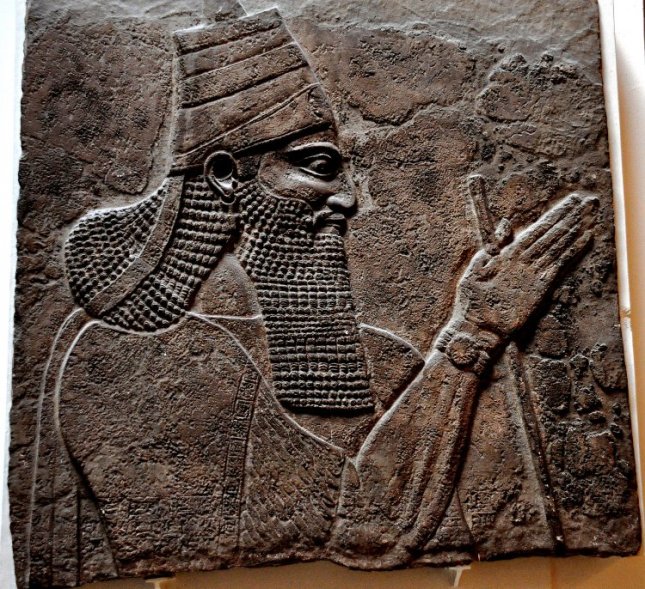
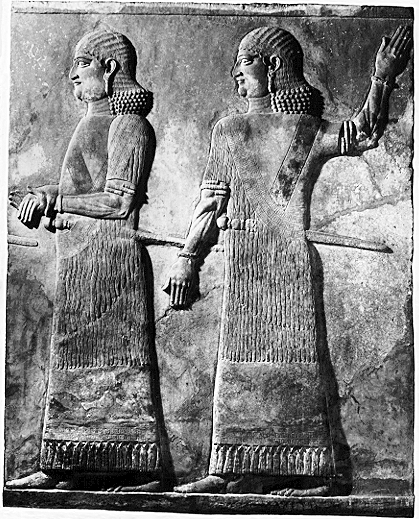
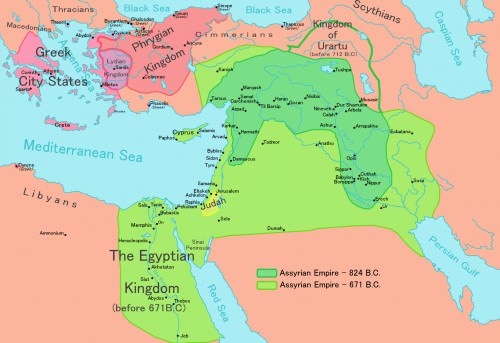
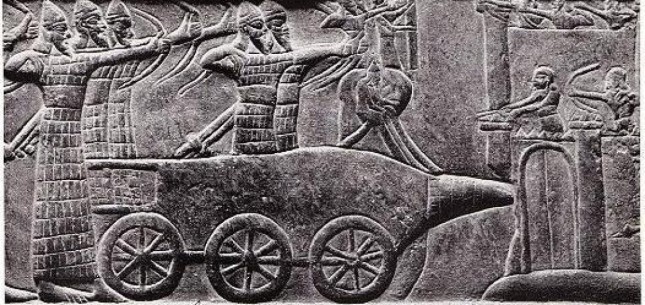
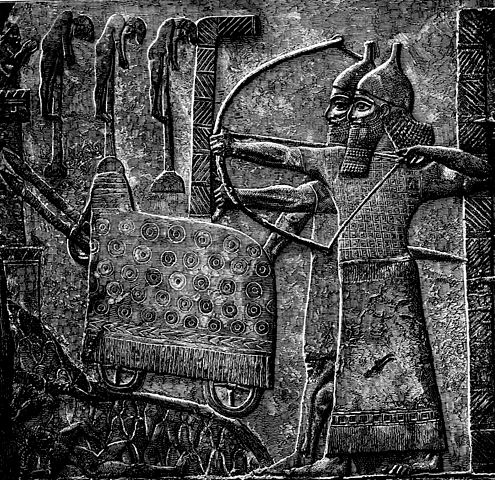

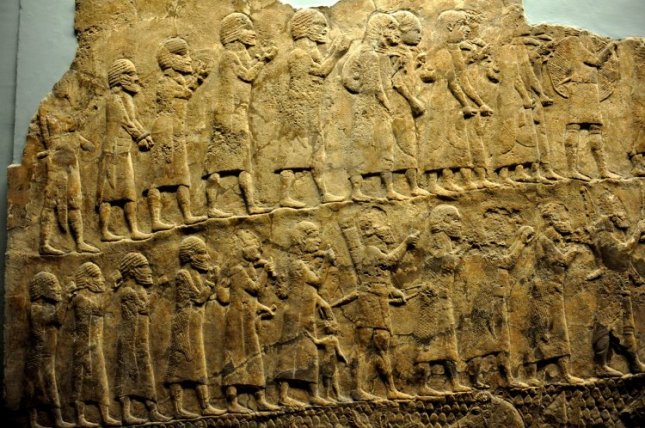




 in a right-angled triangle, aka, the
in a right-angled triangle, aka, the 




































